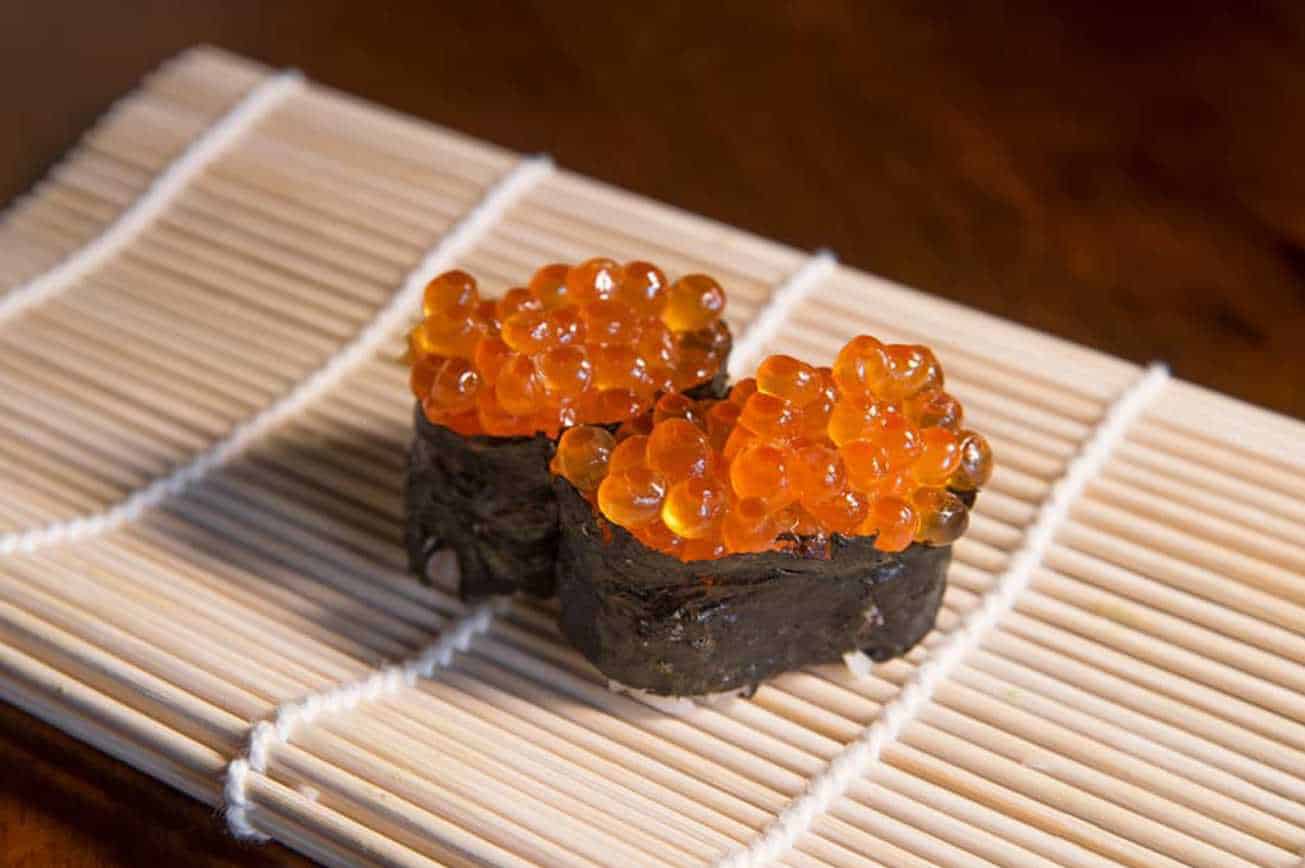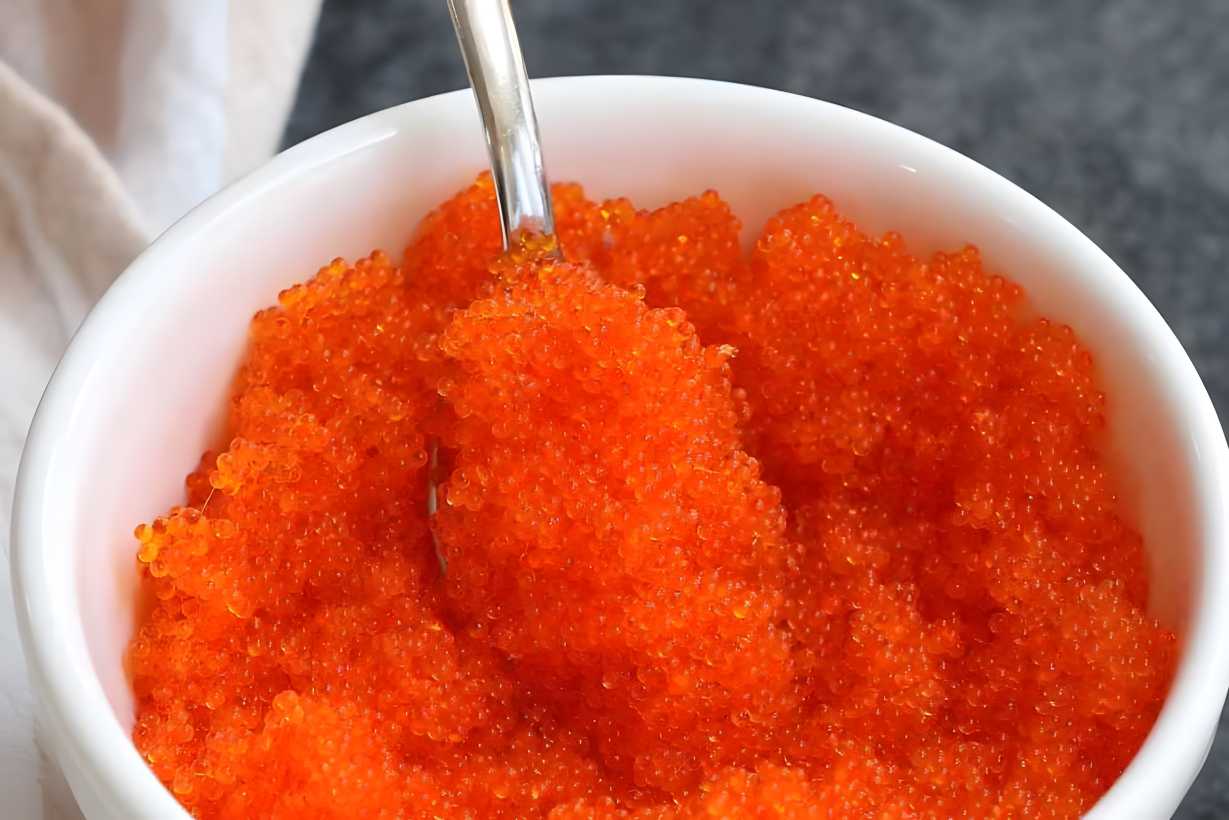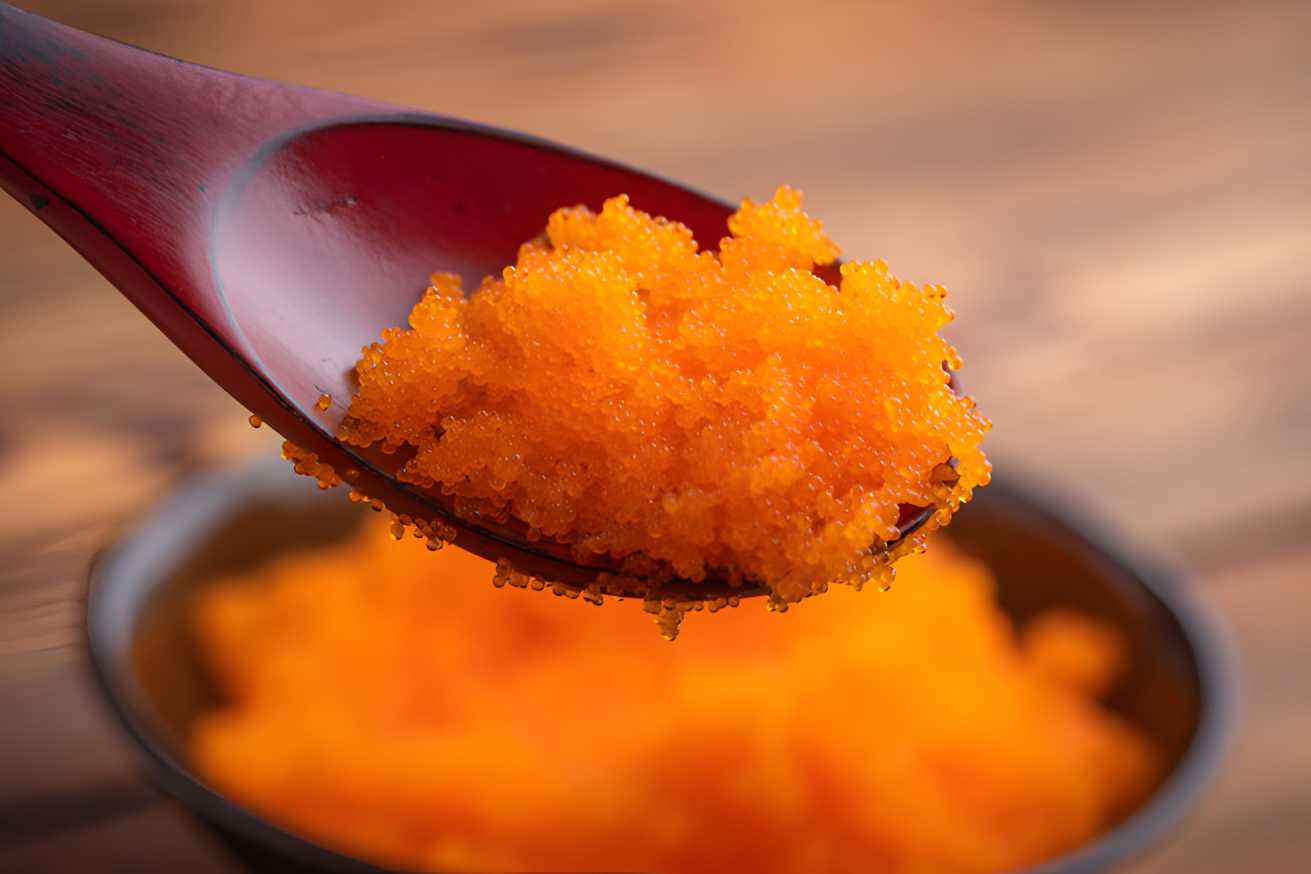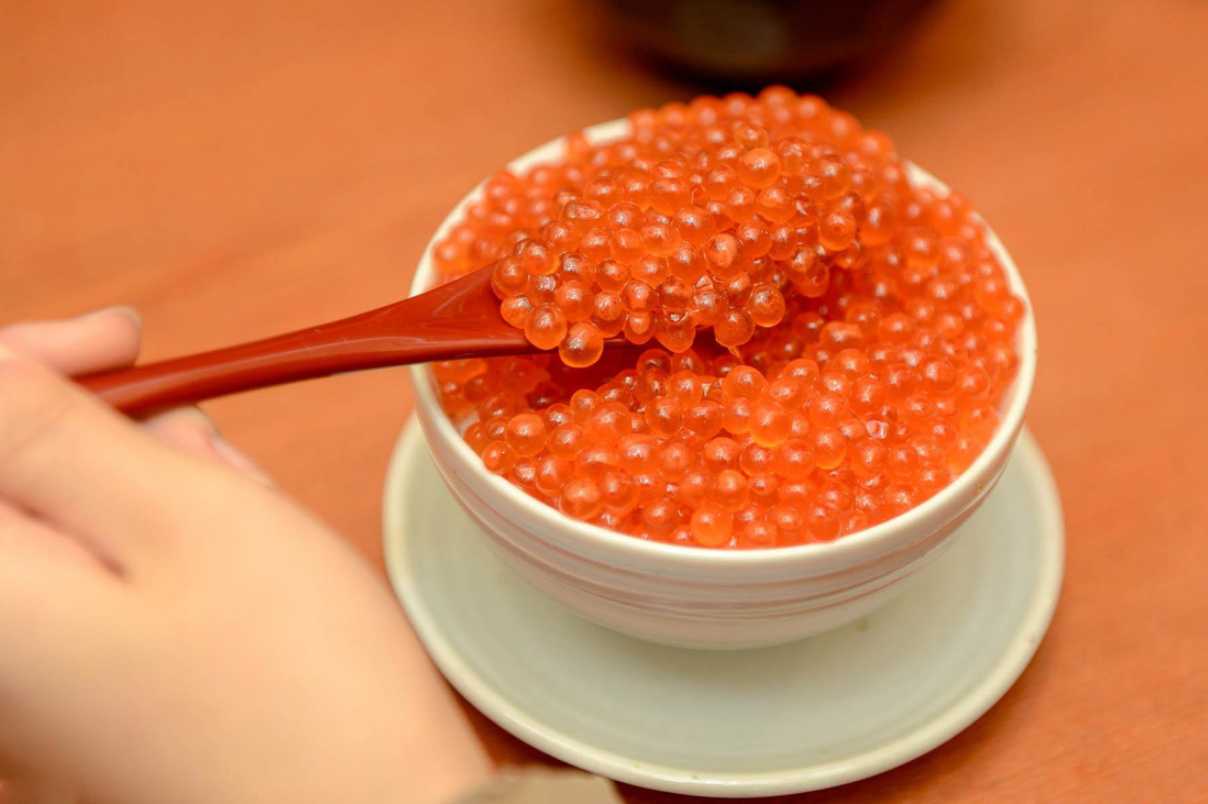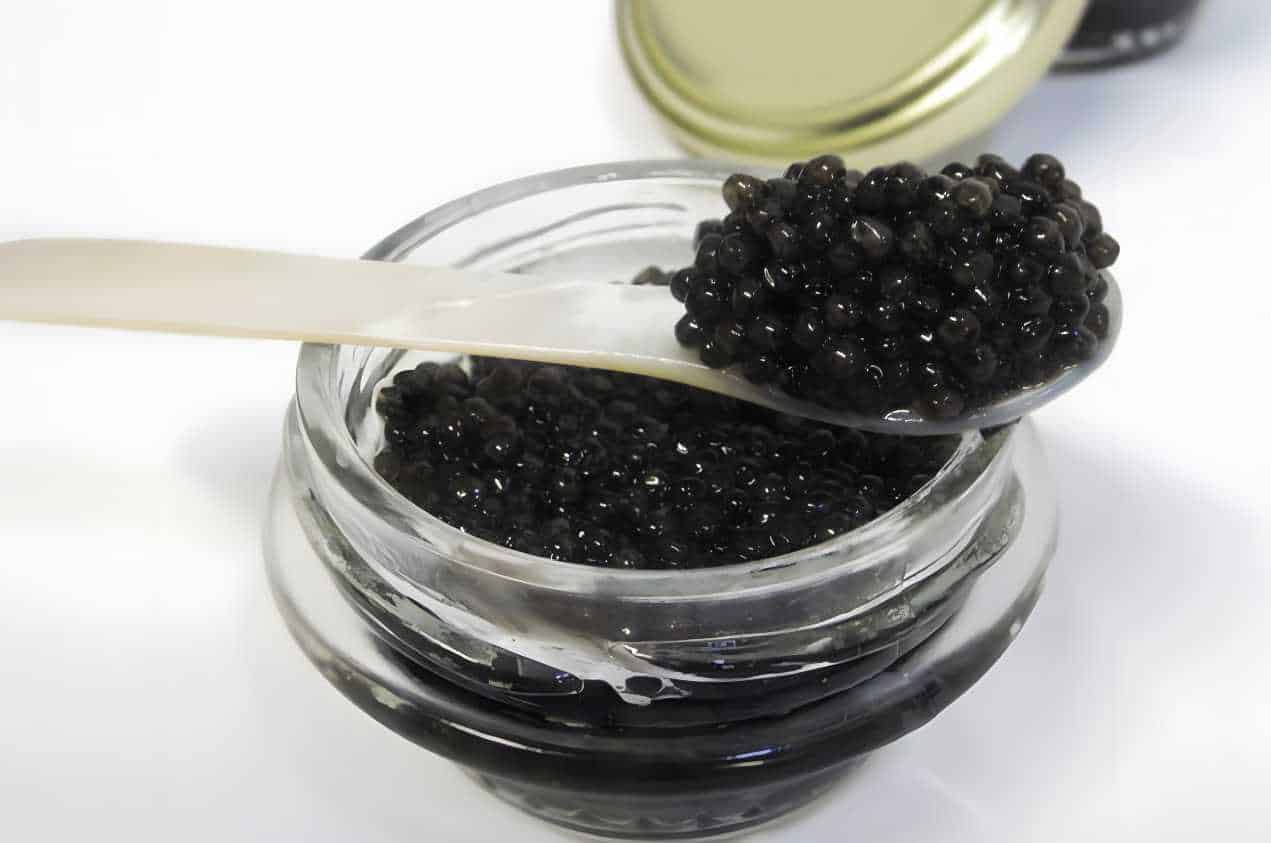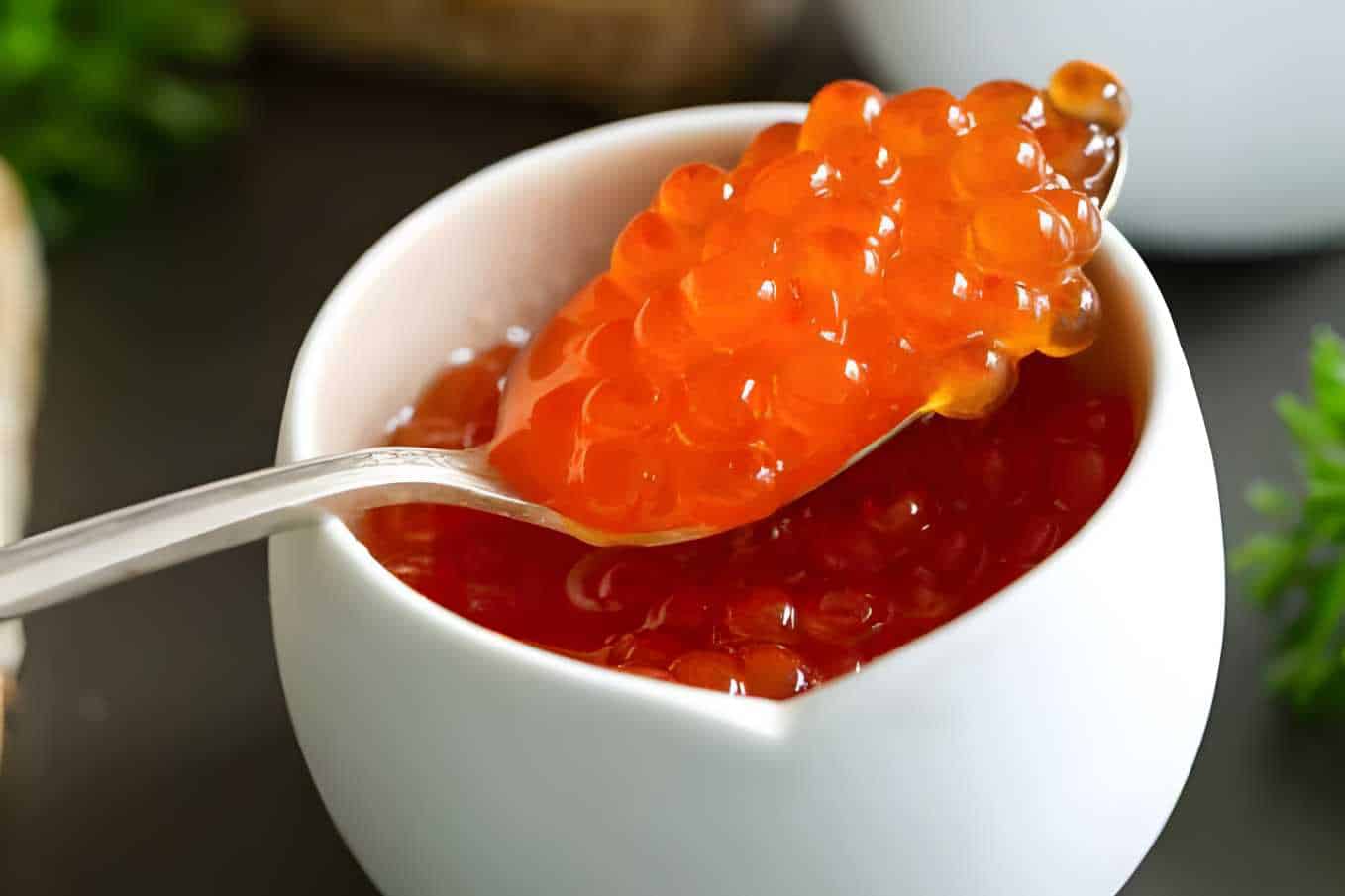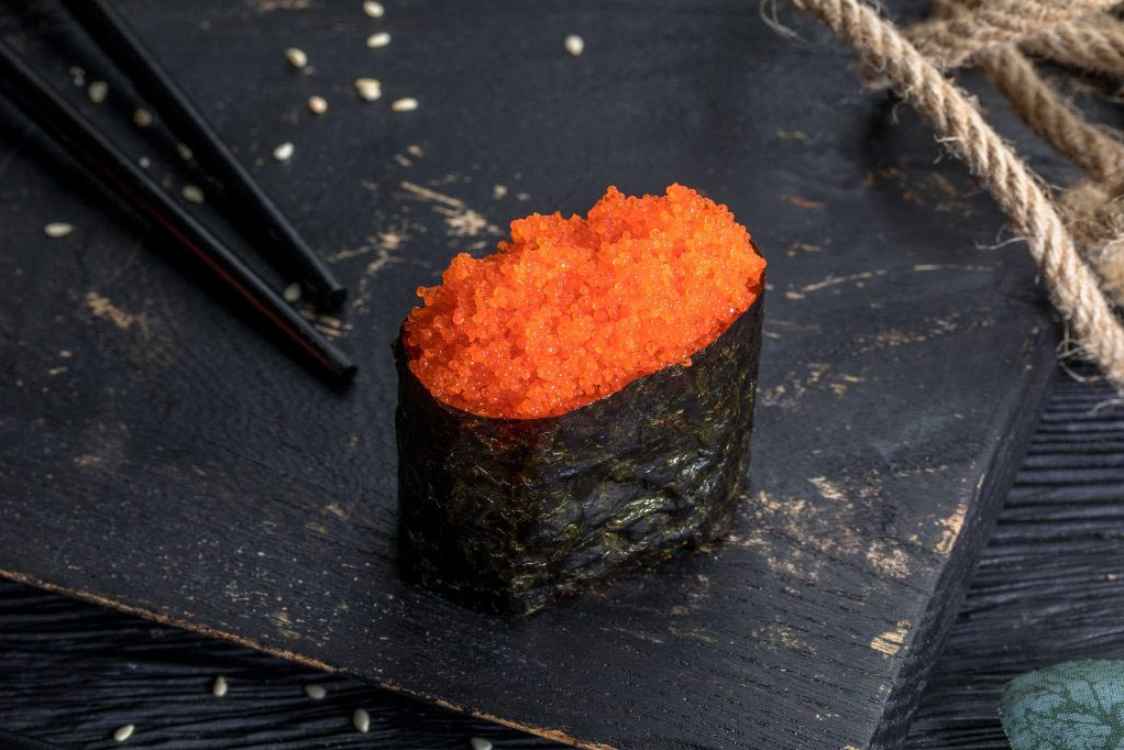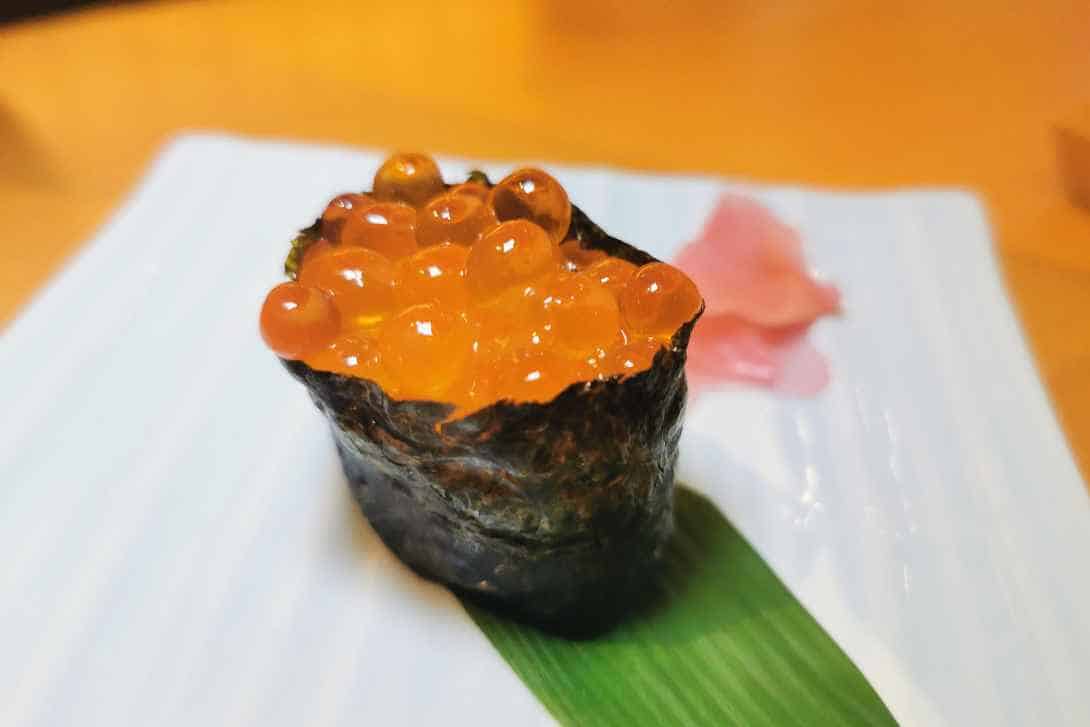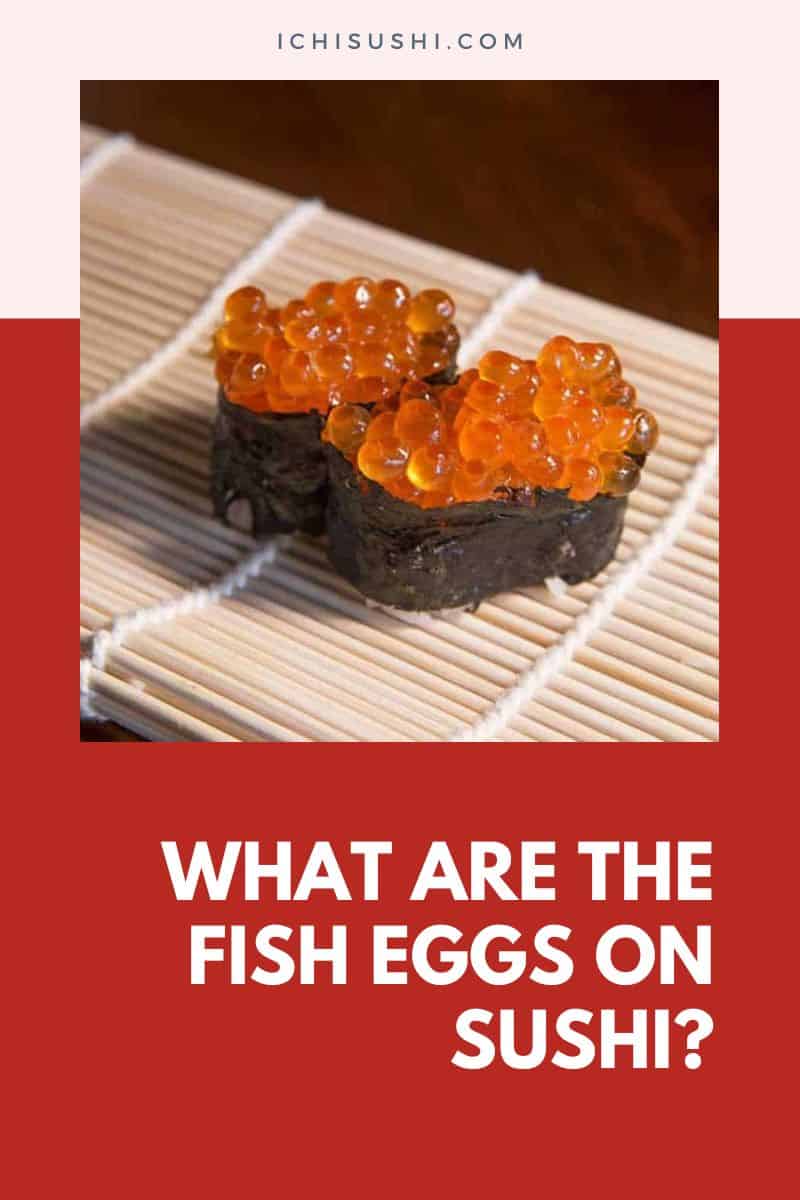Sushi enjoys immense popularity all over the world, with countless enthusiasts relishing its unique flavors. Perhaps you haven’t tried some yet, and you want to, you can take this as a sign.
If you are yet to try more sushi out there, you may have encountered fish eggs and wondered, “What are fish eggs on sushi?”
Fish Eggs on Sushi
While eating sushi, you must have encountered the small round ingredients usually coating the outside of the slice. These fish eggs are also called roe.
This term refers to fish eggs used in a dish or included in various garnishes. There are three common types of fish roe used in sushi, namely Tobiko, Masago, and Ikura. Let’s talk about the first type; introducing tobiko.
| Fish Egg Type | Color | Flavor |
|---|---|---|
| Tobiko | Orange | Mildly sweet |
| Ikura | Red-orange | Salty |
| Masago | Orange | Mildly salty |
| Uni | Yellow | Creamy, sweet |
Tobiko
Tobiko is roe laid by flying fish species. The term ‘tobiko’ came from shortening the phrase ‘tobiuo no ko,’ which directly translates to ‘flying fish roe .’Flying fishes lives in the open ocean and primarily eat zooplankton.
These fishes are typically located in tropical and sub-tropical areas. You probably heard or seen them on television as they can fly! These fishes have evolved and developed the capacity to glide to escape threats and dangerous situations.
They are perhaps at the top of the list for popularity, as many people worldwide know about them. These tiny eggs can range from 0.5 to 0.8 mm, and bigger ones can be 0.9 mm or more, but the typical sizes do not exceed 1 mm.
Tobiko offers a unique crunch when eaten, known for its mildly salty and slightly sweet flavor, distinguishing it from other types of fish eggs.
When placed in dishes, these eggs are easily spotted because of their vibrant color of bright red and orange. On the other hand, different cooks add extra things to their fish roe to spice its flavor.
As for color alterations, chefs usually infuse tobiko with the following natural ingredients.
- Squid ink to make the color darker or blacken tobiko.
- Yuzu to alter the colors into yellow.
- Wasabi helps make tobiko greenish.
- Beet to transform it to a redder shade or a particular red shade desired.
Masago
The next type of fish roe is called Masago. Masago means ‘sand’ and is termed that way because of its appearance.
These eggs are from a forage fish called capelin coming from the smelt family. In fact, eggs from any member of the smelt family are called Masago.
Masago, often mistaken for Tobiko, is less vibrant in color and offers a milder flavor, making it a subtle addition to sushi dishes. They come in a red, orange, and red-orange shade but are paler than Tobiko.
Tobiko and Masago are also differentiated through their size as Masago is smaller than Tobiko, and so is the sensation when you consume them.
While tobiko provides a satisfying crunch when you bite onto them, Masago does not have any crunch to them. They are somewhat sandy than crunchy. These eggs are also slightly bitter.
Despite these differences, Masago is often used as a substitute for Tobiko. They are often dyed to create a more vibrant and brighter color mimicking Tobiko.
Tobiko is expensive, so using Masago as an alternative can be an ideal option for some people, given a different situation or perhaps a shortage in stock.
Ikura and Caviars
Ikura
Ikura is the Japanese term for Salmon roe. These eggs come from salmon and are noticeably larger than Tobiko and Masago and other common fish roe. Ikura also has a distinctive color because of the difference in its intensity.
In terms of appearance, these eggs have a way more intense red-orange color with quite a transparent and shiny egg appearance. In addition, they should have a good smell and rich and bold flavor.
With a gooey texture, Ikura is quite more delicate, so it should be handled carefully for the eggs not to pop or get punctured.
In the past, Ikura was formerly curated in salt, but the more modern and common marinate for these eggs is soy sauce; it could be with extra spice or just plain. This fish roe is often enjoyed wrapped with a crunchy seaweed sheet.
Bowfin caviar
This is also called Cajun caviar and has a local name of ‘choupique’.
These eggs come from bowfins, and despite not being a part of the sturgeon family, its eggs are known to be of high quality while also being in the affordable department. Bowfin caviar is a good sushi garnish.
Black Lumpish caviar
These eggs are one of the inexpensive entry-level caviar available on the market. They are ideal when you are new to the caviar world and good caviar for gourmet meal recipes.
These eggs are crunchy and have a salty fish flavor to complement other ingredients.
Trout caviar
These eggs come from the European rainbow trout and are bright orange. They have a smokey and sweet flavor that is compatible with many dishes.
Whitefish caviar
These golden yellow eggs come from the Great Lakes of North America. They have a mild taste and go very well with many dishes like soups, sushi, etc. Whitefish caviar can also be featured in different sauces.
Wait, There’s More: More Fish Eggs on Sushi
There are still many types of fish roe available out there, and an excellent companion to sushi. Here are more fish roes used and found on sushi.
- Kazunoko – These eggs are from herrings and have been a symbol of good fortune, according to locals. They have been popular for quite some time. The flavor is a combination of salty, savory, and a hint of sweetness in every crunchy bite because it’s marinated in soy sauce.
- Paddlefish caviar – This type of caviar is also called ‘spoonbill’ caviar and is a good starting point if you are starting in the caviar and sushi world.
- Sujiko – These eggs are extracted from salmon, but they are not considered and are called Ikura. They are different because these eggs are harvested while it’s still inside the egg sack. Sujiko is popular in Japan and is commonly included in onigiri. A tip for eating Sujiko is that it’s even tastier when eaten with sake!
- Tarako – These are sacks of eggs from pollocks and are famous for having a very tender texture. Tarako is a light pink-colored sack that has a mild flavor, making it a good flavor contributor to sushi and sashimi. They can stand alone, or they can be partnered with other ingredients.
- Tuna bottarga (Karasumi) – These eggs come from the bluefin tuna and can be prepared in various ways, making it a good and flexible roe. These are also found on gray mullet-dried egg sacks. In Japanese, these are called Karasumi. However, they are named differently in different places and parts of the world.
- Uni – Uni consists of the gonads of sea urchins, which are responsible for producing eggs. Although commonly referred to as roe, uni is technically an organ, offering a rich and creamy taste that’s increasingly sought after. Uni has been increasing in popularity, and the price for these is also rising.
Fish Eggs and Their Nutritional Value
Like any other sushi ingredient, fish roe contributes to the overall taste and quality of the sushi. They also have a nutritional contribution to people who consume them.
Tobiko
This type of fish roe contains high levels of protein and omega-3 fatty acids that help reduce blood pressure and help encourage better heart health.
These eggs are also low in calories, so it’s okay for people who follow a specific calorie count per meal every day. Tobiko is also rich in amino acids that help prevent illness and make sure your body functions healthily as it should.
One downside of Tobiko is its high level of cholesterol which is not suitable for your health. However, this is seldomly a problem as Tobiko serving in sushi is usually tiny.
Masago
Masago has good contributions to the body, including good protein and fatty acids levels. These nutrients help for better blood clotting and help keep your heart healthy.
Another benefit of omega-3 in Masago is its contribution to better eye health and development.
Masago is also rich in vitamin D, which helps keep your bones strong and reduces the risks of bone fractures and other issues that can be encountered in the long run or as you get older.
Another significant health benefit of Masago is vitamin B12 which helps the body function well, especially in absorbing nutrients. Masago is also rich in iron, selenium, magnesium, riboflavin, etc.
Ikura
Like Tobiko and Masago, Ikura has good levels of proteins. Ikura is also rich in antioxidants that significantly help your body.
Ikura has a specific type of antioxidant named astaxanthin, which is a good help in preventing cell damage and is consequently an anti-aging agent.
Summary
Now that you have been introduced to the basics and some of the more complicated types of fish eggs on sushi, you can explore them to taste and become more informed.
Fish eggs are sure to be one of the most exciting ingredients in sushi, and it’s fun to answer the question ‘What are the fish eggs on sushi?”
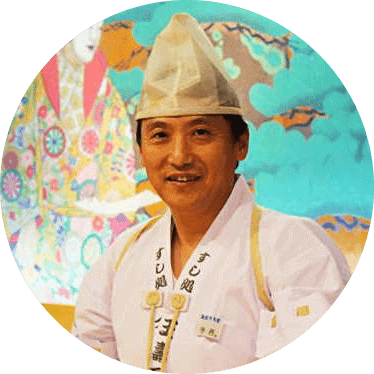
Hiroshi Nakamura, a Tokyo-born sushi chef turned US-based writer and critic, is the voice behind ichisushi.com, blending traditional sushi wisdom with modern insights.
